Latitudes’ "out of office" 2021–22 season
Mon, Aug 1 2022As the summer break creeps up on us with a weary smile in the already sweltering heat-and-humidity of Barcelona, it’s once again time for our annual looking-back post wrapping up the last twelve months of Latitudes’ activities, a period of time which includes the most extensive exhibition we’ve made to date in Spain: MACBA’s “Panorama 21. Notes for an Eye Fire”.
In thinking of how to pen this little introduction to a compilation that’s an ending of sorts, our thoughts turned back to a request we received in February from Shimmer, the exhibition space in Rotterdam, The Netherlands. The artist Jo-ey Tang was creating a new version of a project which would comprise an endless loop of the favourite endings of films suggested by friends of Shimmer. Our contributions: Mariana chose Giuseppe Tornatore’s Cinema Paradiso (1988) and Max, the Coen Brothers’ The Big Lebowski (1998).
In the ending of Cinema Paradiso, Salvatore watches a final bittersweet gift from Alfredo: a reel with all the romantic scenes that had been censored from the cinema. Looking back brings happy nostalgia and a chance to make peace with the past.
And to paraphrase the Coens’ Stranger... well, that about does her, wraps her all up. Things seem to have worked out pretty good. Parts, anyway. Aw, look at me, I’m ramblin’ again. Well, I hope you folks enjoyed yourselves. Catch ya later on down the trail...
This end-of-the-season post is the fourteenth in the “out of the office” series published every end of July to mark the beginning of our holidays (or the desire of having one). Check earlier posts from 2008–9, 2009–10, 2010–11, 2011–12, 2012–13, 2013–14, 2014–15, 2015–16, 2016–17, 2017–18, 2018–19, 2019–20 and 2020–21 seasons. All photos are by Latitudes unless stated otherwise in the photo caption.
x
The September 2021 issue of frieze magazine includes a review of David Bestué's exhibition at Centre d'art La Panera, published online last May.
via @marcnavarro facebook.
Above photo by Hiuwai Chu. Below are co-curator Hiuwai Chu and Rasmus Nilausen under Felix Gonzalez-Torres’s “Untitled (Perfect Lovers)” (1987–1990).
13 September 2021: Boules of oak (Quercus canariensis), cedar (Cedrus sp.) and pine (Pinus pinea) arrive at TMDC in La Verneda, the material for a new iteration of Nyamnyam and Pedro Pineda’s project ‘A quatre potes’ (2014–ongoing) that will be presented in MACBA's exhibition “Panorama 21. Notes for an Eye Fire”.
As the exhibition wall text pointed out, the project is “founded on the principle that in order to share a meal or have a discussion you first have to build a table to sit at. Leading up to and during the exhibition, a group of people with diverse roles within the MACBA are participating in a series of co-design and collaborative making workshops that began with the purchase of several tree trunks from a sustainable forestry initiative in the nearby Montnegre massif.”
During the next week, the trees would be “transformed into planks and laths at the shared machine shop TMDC, this locally sourced wood is being adapted in the gallery by the museum workers into a range of tables, benches, and other structures. This furniture acts as a mediator between natural and human resources, creating different social settings throughout the course of the exhibition and becoming the scenography and motive for a series of discussions around practices of collectivity and cultures of sustainability within and beyond the institutional walls.”
Photo: TMDC
22 September 2021: Conversation with Jorge Satorre as part of the series “Dialogues with artists from the Contemporary Art Collection” and within the framework of “El tiempo en las cosas”, an exhibition curated by Tatiana Cuevas at the Museo Amparo in Puebla, Mexico.
Due to work and time differences, the talk was recorded a few days earlier. The conversation revolved around the production process of "The Erratic. Measuring Compensation", a work included in Satorre's exhibition and commissioned by Latitudes as one of the ten projects produced throughout 2009 in the public space of the Port of Rotterdam, The Netherlands.
‘The Erratic’ is also featured as the September 2021 Cover Story on our homepage.
27 September–19 October 2021: Three weeks installing the first edition of MACBA’s Panorama triennial, “a new series of transdisciplinary projects that reflects the museum’s desire to deepen its collaboration and dialogue with local artists and cultural agents”. The inaugural project of Panorama is the group exhibition “Notes for an Eye Fire” which occupies MACBA's top floor. During this first install week, efforts centred on shipping, registering, and installing Rasmus Nilausen’s “Theatre of Doubts” (2021) at one end of the museum and Stella Rahola Matutes’ “Fig Juice” (2020) at the other end, while walls were being painted, final sound checks were done and artworks were finally arriving at the museum.
Stella Rahola Matutes and Alex Castro (Conservator, MACBA) photo-documenting Stella's work before installation.
Xavi (install crew of Coolturart) installed one of Stella's glass figures.
Stella Rahola Matutes and Xavi (install crew of Coolturart) carefully installed Stella’s “Fig Juice”.
Lluis Roqué (Conservator at MACBA) documented Rasmus Nilausen’s paintings.
Rasmus Nilausen’s paintings (walls) and Stella Rahola Matutes glass pieces and chains (tables) are analysed and registered by the conservation team before installation.
While Rasmus's wooden supports are being assembled, the improvised office at the museum landing is busy checking the “final-final-final” version of the wall labels, intro text and the leaflet.
First of Rasmus Nilausen’s large paintings (1 of 49) is finally up, supervised by Eva Font (left, space coordinator of the exhibition, MACBA), Alex Castro and Lluís Roqué (centre, Conservators, MACBA), ARAM staff (the carpenters that produced the wood supports) and the install crew of Coolturart.
Nilausen's “Wax Cabinet” (2021, 300 x 205 x 6cm, oil on linen) being moved and hung (below).
Ongoing metamorphosis in the largest exhibition space on the second floor.
Last sound checks with Pablo Miranda and Laia Estruch.
R. Marcos Mota of El Palomar doing a mock-up of the archival material to be presented in vitrines.
Meanwhile, nyamnyam and Pedro Pineda’s tree is sent to Lleida to be fireproofed.
To end the first week, Antoni Hervàs’s “La Meiers” (above) arrives at the museum from La Escocesa, as well as Claudia Pagès’s silkscreened and fireproofed cardboard from Capellades (two below), alongside the structure manufactured by Tallers Soteras to hold the LED panels shipped from Shenzhen that forms her new commissioned video installation “Gerundi Circular” (2021) – soundtrack here.
Week 2 begins with the exciting placement of Antoni Hervàs’s “La Meiers” becoming the entrance to the exhibition.
Meanwhile, Arash Fayez’s wall is almost fully painted in the nearby gallery...
...and Claudia Pagès starts installing the LEDs around the circular metal structure.
Claudia amidst the cable maze.
Coolturart team fixing the circular screen to the ceiling.
First sound and image test of El Palomar’s “Schreber is a Woman” with R. Marcos Mota. The amazing soundtrack that accompanies the video can be listened to here, on Spotify or you can also purchase the 12'' vinyl edition.
Drawing of the structures that hold Laia Estruch’s “Ocells Perduts” net structure drawn by the museum architecture department, placed below by RMG Redes.
Vinyl placed in Plaça dels Àngels promoting MACBA’s programme this trimester includes two sketches by Laia Estruch of her “Ocells perduts” piece.
Habemus Ruta de Autor newspaper!
Parallel to all the activities going on, Hervàs continues customising “La Meiers” to fit what will become the entrance to the exhibition.
Eulàlia Rovira’s replica of Richard Meier’s signature column arrives at the museum. Since we have all the hands and machinery ready, it soon goes up.
Eulàlia shares instructions on how to assemble the yellow supports.
Laia Estruch’s large red net slowly goes up and takes shape.
Photo: Hiuwai Chu
Making a selection of Eulàlia Rovira’s new photo collages.
Hervàs in progress.
Technical difficulties. Please bear with us.
Laia is finally able to go up the net and do her first and only rehearsal. High expectations from artists colleagues, curators and staff observing below.
Final calculations before hanging Arash Fayez’s 310 papers documenting his migrant “limbo” status in the US and Europe.
Meanwhile, in the Teatre Molino in Paral·lel, Antoni Hervàs’ begins “La Meller”, the second part of his contribution to Panorama 21: a 27-metre mural in which Hervàs and his collaborator Pau Magrané unfold a chronicle of the neighbourhood's beloved theatres and venues, both past and present, resulting in "a frieze-carousel" where authors, actors and actresses such as Violeta la Burra, Escamillo, Johnson, Pierrot, Ángel Pavlovsky, float timelessly intertwined by boas.
(Above and below) Pau Magrané and Antoni Hervàs working on the graffiti. Photo: Eva Carasol.
Tecnodimensión testing Laia Estruch’s wind sock before mounting it on the wall.
Adrian Schindler goes through the ephemera that will be displayed as part of his installation.
Installing Rosa Tharrats’s work in the atrium/corridor space.
Placing the newspaper spread by Ruta de Autor to check heights.
Entrance / Exit of the exhibition in progress.
Marria Pratts’s “Sento una música dintre del cap (I Hear Music Inside My Head (Transformation of a Blurry Thought)), 2021.
Antoni Hervàs’ “La Meiers” is almost there.
Installing Rosa Tharrats’s work in the atrium/corridor space.
Iñaki of nyamnyam and Pedro Pineda placing the fireproofed wood boules (detail below)
Max Andrews, Hiuwai Chu and Aleix Plademunt checking the measurements between the 18 images.
Important message from Antoni Hervàs: “Do not paint in white!! (please) You were right, thank you. NO!” :-)
As the day ends we leave the museum and take a gander at the lighting colours on Rosa Tharrats’s installation as the days get shorter.
Entrance vinyl is in place and final cleaning.
In the 16th dispatch, curator Marie-Nour Héchaimé navigates Beirut with artist-filmmaker Panos Aprahamian a year after the August 2020 explosion, when hundreds of tons of ammonium nitrate stored for six years without safekeeping in the port of the Lebanese capital were set on fire and exploded. The blast killed more than 200 deaths, 6,500 wounded, 300,000 displaced, and great destruction in the city. “I say that I am living with ghosts—of people, places, memories, stories”, she reflects. “He answers that Beirut is disintegrating in front of our very eyes.”
Part of the series produced by KADIST and edited by Latitudes since 2016, exploring the chartered itinerary as a format of an artistic encounter between curators and artists.
21 October 2021: Press conference and evening opening of the exhibition “Panorama 21: Notes for an Eye Fire” at MACBA. We realise this is the first time all the artists and curators are able to meet IRL.
Final clean-up before the press conference.
Photo: Pedro Pineda.
Participants of “Panorama 21. Apunts per a un incendi dels ulls” (nyannyam and Ana Domínguez are missing) posing for the press. Photo: Hiuwai Chu
(Above and three below) Press conference in MACBA's atrium, 21 October 2021. Photos: Miquel Coll.
(Left to right) Max Andrews (Latitudes), Hiuwai Chu (Head of Exhibitions, MACBA), Elvira Dyangani Ose (Director, MACBA) and Mariana Cánepa Luna (Latitudes) during the press conference, 21 October 2021. Photos: Miquel Coll.
Participating artist Eulàlia Rovira responded to Carolina Rosich's questions for TV3 news. Photo: Hiuwai Chu.
(Above and nine below) Opening of the exhibition “Panorama 21. Apunts per a un incendi dels ulls” at MACBA. Photos: Miquel Coll.
Photo by Hiuwai Chu.
19 November 2021: First change of Nyamnyam and Pedro Pineda’s “A quatre potes” (2014–ongoing), a scenography presented as part of MACBA’s exhibition “Notes for an Eye Fire”.
20 November 2021: First of four open rehearsals of “Ocells perduts” [Stray Birds] (2021) by Laia Estruch presented as part of MACBA’s exhibition “Panorama 21. Notes for an Eye Fire”.
25 November 2021: Jury of the 5th edition of DART Festival, alongside the film critic Quim Casas and the journalist Ianko López, and festival team members Enrichetta Cardinale and Silvana Fiorese, to choose the best national and international documentary in the competitive section.
2 December 2021: Parlem de...cabaret, a guided visit led by participating artist Antoni Hervàs as part of MACBA’s exhibition “Panorama 21. Notes for an Eye Fire”. The audio was edited and later made available on Latitudes’ Soundcloud.
Audio of Toni’s 1h guided tour on Soundcloud.
Second part of Antoni Hervàs’ itinerary we stopped at the bar Atlanta FC in Rambla del Raval, where Hervàs explained the origins of his proposal for his two-part project for MACBA's exhibition: the 1980s board game “El Chino” (as part of El Raval neighbourhood was formerly known). Hervàs also shared a selection of preparatory drawings that we would later see on the wall he and Pau Magrané graffitied in Paral·lel.
The itinerary ended in front of Teatre Arnau in Paral·lel, where Toni Hervàs and his collaborator Pau Magrané painted the wall that protects the theatre during its restoration. Hervàs’ mural honours the cabaret history of Paral·lel’s nightlife, its cabaret, bars, and actresses.
9 December 2021: Parlem de...Anecdotes to be Forgotten, a performative walkthrough by Arash Fayez as part of MACBA’s exhibition “Panorama 21. Notes for an Eye Fire”.
14 December 2021: Ràdio Web MACBA publishes a podcast with El Palomar (in Spanish) where they discuss “Schreber is a Woman” (2020) their most recent film produced for the 11th Berlin Biennial and presented for the first time in Spain as part of MACBA’s “Apunts per a un incendi dels ulls”.
Phone view of → http://incidents.kadist.org/Riga
17–19 December 2021: After months of uncertain planning, Paul O'Neill, director of PUBLICS, is able to visit Barcelona to meet Laia Estruch and attend the second rehearsal of her work ‘Stray Birds’ (2021), a new commission produced for the exhibition “Notes for and Eye Fire” at MACBA, and supported by PUBLICS.
January 2022: Visiting MACBA’s exhibition with long-time artist friend Lara Almarcegui based in Rotterdam.
13 January 2022: Hablemos de... Passió i cartografia per a un incendi dels ulls, a sung visit by poet Gabriel Ventura and flamenco cantaor Pere Martínez, reading and singing poems written for the occasion by Gabriel. Pell de gallina!
Gabriel started the itinerary under Antoni Hervàs’s work “La Meiers”, a work commissioned for MACBA’s exhibition, that became the entrance and the exit to the neighbourhood.
17 January 2022: Exactly a year after its closure, we receive a copy of the publication accompanying the exhibition “Things Things Say”, which took place at Fabra i Coats: Centre d'Art Contemporani de Barcelona between October 2020 and January 2021. We are elated to finally have it in our hands!
A discussion around “A quatre potes”, the project presented in the exhibition by nyamnyam and Pedro Pineda, around forest management, design as an investigative tool, and the limits of the museum with the participation of Lídia Guitart (forest engineer), Curro Claret (industrial designer), Ingrid Guardiola (writer, cultural researcher and Director of Bòlit, Centre d'Art Contemporani), the artists, exhibition curators, and workshop participants. This activity was part of Education from Below, a project with the support of Creative Europe's programme of the European Union Creative Europe.
The setting for the event was rearranged the evening before with workshop participants (MACBA staff that have volunteered in a number of workshops cutting the wood planks, arranging them in the exhibition space, and changing the set-up on a monthly basis) following the principle and the spirit of the project that “in order to have a discussion we need a table”.
(Above and below) The before and after, seating is ready for tomorrow's open discussion. Photos: Ariadna Rodriguez (nyamnyam).
Designer Curro Claret brought in an earthenware cup used in India to drink tea before boarding on a train. Once used the cup is thrown out the window and hence, naturally recycled into the landscape, an “evident example of what circular economy is and should be”. Plastic cups took over but pollution along the tracks was so bad the government encouraged tea makers to go back to earthenware.
Ingrid Guardiola began mentioning Octavi Comeron’s “La Fábrica Transparente” and how institutions’ obsession with transparency, in turn, generates opacity from within those institutions or, as Peter Sloterdijk warned, is an example of cynical transparency. Then moved on to reflect on how institutions could learn from forest’s entropy and efficiency and how exceeding energies could be used within institutions.
Lidia Guitart, a forest engineer from the Associació Propietaris Forestals del Montnegre i el Corredor (from where nyamnyam’s wood was originally purchased) discussed perceptions of forest management in Catalunya in relation to Finland (the leader in paper pulp supplier) and shared some interesting data: 60–70% of Catalunya is forest, yet 80% of that is in private hands.
The 2h session was punctuated by printed cards with words/concepts triggering several subjects related to each of the guests' practices which were then chosen at random to encourage interlinking rather than monothematic presentations.
2 February 2022: Ràdio Web MACBA publishes a podcast with Claudia Pagès (in Spanish) where she discusses “Gerundi Circular” (2021) a new video-installation commissioned for MACBA’s “Apunts per a un incendi dels ulls”. The work is presented in her solo show “Abajo el puerto suena nino-nino, y yo arriba pipí” in Madrid’s gallery The Ryder in June 2022.
The book includes a preface by art centre director Joana Hurtado Matheu, new texts by Latitudes, a text-based intervention by participating artist Eulàlia Rovira, and texts on each exhibited work also written by Latitudes.
22–25 February 2022: Trip to Madrid for ARCOmadrid. Max previewed “What to see during this year's ARCOmadrid” for frieze. Worth adding to the list is the joyous retrospective of Bruno Munari at Fundación Juan March, the catalogue currently on our desk.
27 February 2022: After a four-month run, the exhibition ‘Notes for an Eye Fire’ comes to an end at MACBA. Here is a selection of the most relevant reviews, clips from television and radio programmes that have covered the show, and of course photo documentation.
As a poetic colophon of the exhibition, the publication “Passió i cartografia per a un incendi dels ulls” was released. It includes a new poem in three movements by exhibition participant Gabriel Ventura, and photos of the works in the museum galleries documented by Roberto Ruiz, Eva Carasol, Miquel Coll and Latitudes.
2 March 2021: Ràdio Web MACBA publishes a podcast with Panorama artist Marc Vives (85'22'' in Spanish) where he discusses his practice and for MACBA’s “Apunts per a un incendi dels ulls”.
10 March 2022: Lecture about our curatorial practice and on the recently concluded MACBA exhibition “Panorama 21. Apunts per a un incendi dels ulls” to fourth-year students at the Fine Arts Department of the Universitat de Barcelona. The student Rita Duarte Lli tagged us during our presentation, so we asked if she would mind sharing the mental map she drew during the session, see below.
Mental mapping of the session courtesy of Rita Duarte Lli (@ritinacaipirina ) following the @cursogenius.es technique.
We donated three more publications (“Passió i cartografia per a un incendi dels ulls” published by MACBA in 2022, Lola Lasurt’s “Joc d'infants” published by La Capella in 2020 and Anna Moreno’s “The Drowned Giant” also published by La Capella in 2017) to PUBLICS Library, joining the first 5kg we donated back in 2019. These will soon be joined by the publication of the exhibition “Things Things Say” published by Fabra i Coats: Centre d'Art Contemporani de Barcelona. You can search here.
[Note that not all the results are under “Latitudes”, others are under “Max Andrews” or “Mariana Cánepa Luna” as writers]. PUBLICS library is the third location where the whole set of Latitudes’-edited publications sleep, alongside the Library of the MACBA Study Centre, Barcelona, and the Paul D. Fleck Library & Archives, The Banff Centre, Canada.
On March 15, we had the chance to do an adaptation of our itinerant “Near-Future Artworlds Curatorial Disruption Foresight Group” workshop (earlier iterations took place in Bari, San Francisco, Birmingham, and Barcelona), this time under the “Professional Skills for Artists” class led by Prof. Suzanne Mooney. We met around fifteen MFA students in the new Sörnäinen campus building of the Academy of Fine Arts of the Uniarts Helsinki. Throughout our 2-hour encounter, issues such as the lack of free-of-charge exhibition spaces for younger artists or affordable studio spaces emerged when reflecting on the weaknesses of Helsinki’s art ecology and how could these needs be “hacked”, improved, and ideally eliminated.
30 March 2022: frieze.com publishes Max Andrews’ review of Bruno Zhu’s exhibition “I am not afraid” at Cordova in Barcelona. The frieze summer issue will include a printed version.
31 March 2022: Press trip to Córdoba on the occasion of “Abundant Futures”, the inaugural exhibition Thyssen-Bornemisza Art Contemporary (TBA21) organises in C3A Centro de Creación Contemporánea de Andalucía, Córdoba, as part of their three-year-long collaboration agreement.

(Above) Ceramic pieces by Asunción Molinos Gordo. (Below) Installation by Ernesto Neto.
(Above) Installation by Daniel Steegman Mangrané.
(Below) "Apagón" (2017) by Allora & Calzadilla, included a performance activated in the opening evening performed a capella by a local choir.
(Above) Installation view with works by Ai Weiwei (left) and Regina de Miguel (right).
1 April 2022: New cover story on Latitudes’ home page on Laia's performance “Mix” and PUBLICS & Latitudes match.
8 April 2022: Curatorial studio Shimmer in Rotterdam (first Paraguests of PUBLICS) inaugurate “More More More Than Than Than Lovers Lovers Lovers More More More Than Than Than Friends Friends Friends” a “looped supercut of film endings, selected by those who Shimmer admires. A compilation of final scenes and musical accompaniments with the closing credits, these endings are experienced repeatedly, back to back.” Max and Mariana of Latitudes each selected a film ending for the occasion (ref. at the beginning of this post).
18 April 2022: 18th dispatch of Incidents (of Travel) is live! Narration and photography by curator Xenia Kalpaktsoglou and artist Pegy Zali from Attica, Greece. Xenia and Pegy conceive an itinerary and a screenplay-like commentary that takes us through the Attica peninsula, from a mysterious inscription sprayed at the site of a railway sabotage that transpired near Piraeus Port in 2010, to the vestiges of an enormous wildfire that consumed the forest around Alepochori in 2021. Produced by KADIST.
May 2022: Discussing details with Laia Estruch and Helsinki-based writer and curator Irina Mutt for touring Estruch’s “Ocells Perduts (Stray Birds)” (2021–22) to Helsinki.
Early June 2022: While visiting Madrid for work-related appointments, we had a chance to peak into Rosa Tharrats’s first solo show at Galería Ehrhardt Flórez before it opened and to visit Aleix Plademunt’s largest solo show to date at Sala Canal Isabel II. Both artists were recently featured in “Panorama 21. Notes for an Eye Fire”, and other “Panorama alumni” (Laia Estruch, Adrian Schindler, Arash Fayez and Gabriel Ventura) are also currently or soon exhibiting in Madrid, as featured in this post.
“Entrando en la obra” (Entering the Work, 2018) is screened on the top floor. The 6-minute film is the opening chapter of the videographic essay “Shelter”, a series of films in the form of correspondences Coderch produced between 2015 and 2018. This is “the first letter devoted to the simple gesture o pointing something out for someone else (...) and behind this gesture lies an invitation to enter the picture, to make yourself visible too, together with what is being pointed to.” [as written in the exhibition guide]
23 April 2022: “Things Things Say” cover is peaking out amongst the selection of publications sold at the Serveis Editorials de l'Ajuntament de Barcelona book stall in Passeig de Gràcia on the occasion of Sant Jordi 2022.
2 May 2022: “Things Things Say” book features in the May Cover Story. The exhibition began with a list of thirty-three questions that confronted visitors, which find their answers in the (mini) catalogue. Ranging from literary quotations and curatorial touchstones to theoretical anecdotes and red herrings, the “answers” wander around the exhibited works, and tack back-and-forth between exceptionally normal things and the extraordinary global narratives of labour, obsolescence, and the industrialisation of nature, that they trigger.
Between June and September, Irina will lead a series of three workshops with PUBLICS YOUTH, an education project for Helsinki-based 18-21-year-olds. Based on the idea of a “tour” of Estruch’s “Ocells Perduts (Stray Birds)” from its original museum context to human bodies in Helsinki, the sessions will broach performative practice, translation and transcription, and the non-verbal capacity of the voice.
18 May 2022: Visiting “The Milk of Dreams”, the 2022 edition of La Biennale di Venezia curated by Cecilia Alemani. So great to see you again Venezia.
11 June 2022: Opening of “Cracking a nut” a solo show by Barcelona-based artist Lúa Coderch on three floors of Fabra i Coats: Centre d'Art Contemporani, Barcelona. [The exhibition had to close two days later due to climate control issues and will reopen on September 13].
Curated by the art centre director Joana Hurtado Matheu, the exhibition includes the work “La declaración del arcoíris” (The Rainbow Statement, 2022), originally commissioned by Latitudes as one of five “Compositions” interventions produced for the Barcelona Gallery Weekend 2016. In its first incarnation, Coderch guided sunlight and a spectrum of colours down into the underground gaming space of the Barcelona Billiards Club with a series of precisely positioned mirrors and prisms as if evoking the mechanics, geometry and artistry involved in billiards.
(Above) “La declaración del arcoiris” (The Rainbow Statement, 2022) at Fabra i Coats: Centre d'Art Contemporani.
“La declaración del arcoiris” (2022). Photo courtesy Lúa Coderch. Image Adrià Sunyol Estadella and Alex Weecha.
(Above and two below) Lúa Coderch’s “The Rainbow Statement” (2016) at the Barcelona Billiards Club, part of “Composicions” series of interventions curated by Latitudes for the Barcelona Gallery Weekend 2016. Photos: Roberto Ruiz.
The voice-over features the voice of Mariana Cánepa Luna of Latitudes, which was recorded in March 2017 in a highly DYI mode by improvising a soundproof environment with blankets and carpets in the quietest space in the home on a Sunday morning: the WC.
Some things to look forward to in the 2022–2023 season: In September we will begin a three-month online mentorship of the first curatorial residency given to a young Peruvian curator organised by TROPICAL PAPERS and submit an essay commissioned for the catalogue of the group exhibition “Futuros Abundantes” organised by Thyssen-Bornemisza Art Contemporary (TBA21) at C3A Centro de Creación Contemporánea de Andalucía, Córdoba.
(Above) Lúa Coderch, (Still) “SHELTER (Entering the work)”, 2015-18. Work produced with the support of Ayuda Fundación BBVA a la Creación en Videoarte 2015. Courtesy Lúa Coderch. Image Adrià Sunyol Estadella.
20 June 2022: Writer and curator Irina Mutt leads the first of a series of workshops with PUBLICS YOUTH, an education project for Helsinki-based 18-21-year-olds. Based on the idea of an “itinerancy” of Laia Estruch’s “Ocells Perduts (Stray Birds)” from its original museum context [presented in “Panorama 21. Notes for an Eye Fire”] to the human bodies of PUBLICS YOUTH’s members in Helsinki, the sessions broached performative practice, translation and transcription, and the non-verbal capacity of the voice.
23 June 2022: 19th dispatch of Incidents (of Travel) from Seoul is live on incidents.kadist.org! Narration written by curator Sooyoung Leam and itinerary devised and led by artist Yeoreum Jeong from Seoul’s Yongsan district. Photography by Swan Park, produced by KADIST.
21 July 2022: Adrian Schindler and Eulàlia Rovira (“Panorama 21. Notes for an Eye Fire” alumni) guided visit and in conversation with Mexican curator and researcher Paulina Ascensio, as part of their exhibition “The Plague, The Profit” at the non-profit The Green Parrot.
23 July 2022: El Palomar (“Panorama 21. Notes for an Eye Fire” alumni) curates an evening with music productions by trans artists, as part of MACBA’s Lorem Ipsum programme, “connecting the musical and the festive with their potential for empowering possible queer scenes”. The evening includes remixes from the soundtrack of the film “Schreber is a Woman” (2020) presented in MACBA (Spanish première).
More soon, onwards!
→ RELATED CONTENTS:
- Latitudes’ "out of office" 2020–21 season, 2 August 2021
- Latitudes’ "out of office" 2019–20 season, 3 August 2020
- Latitudes’ "out of office" 2018–19 season, 1 August 2019
- Latitudes' "out of office" 2017–18 season, 2 August 2018
- Latitudes "out of office" 2016–17 season, 1 August 2017
- Latitudes' "out of office" 2015–16 season, 1 August 2016
- Latitudes' "out of office" 2014–15 season, 7 August 2015
- Latitudes' "out of office" 2013–14 season, 31 July 2014
- Latitudes' "out of office" 2012–13 season, 31 July 2013
- Latitudes' "out of office" 2011–12 season, 31 July 2012
- Latitudes' "out of office" 2010–11 season, 1 August 2011
- Latitudes' "out of office" 2009–10 season, 30 July 2010
- Latitudes' "out of office" 2008–9 season, 30 July 2009
"Barcelona / Such a beautiful horizon: Critical social infrastructure to promote art scene health resilience" sessions with BAR Tool 2018–19 participants
Mon, Oct 29 2018 |
| Poster produced for the 2015 seminar at the Kadist Art Foundation, San Francisco. Photo: Latitudes. |
Latitudes has been invited to lead three closed-door sessions with BAR Tool's 2018–19 participants Milagros Bedoya, Arash Fayez, Adëláide Feriot, Fran Glez, Céline Mathieu, Marina Salvo, Gabriella Torres-Ferrer. The sessions will take place on October 29, 2018; January 22 and March 5, 2019.
Titled "Barcelona / Such a beautiful horizon: Critical social infrastructure to promote art scene health resilience", the three-part seminar will draw on the qualitative analysis of the legacy of three meetings of the "Near Future Artworlds Curatorial Foresight Disruption Group" convened in 2015 (Vessel–MADA International Curatorial Retreat, Bari, Italy; Kadist Art Foundation, San Francisco, USA; Eastside Projects, Birmingham, UK). The invitation is to collectively instigate a collective systematic review of proposed decisive factors that underpin the psychological fitness and physical well-being of a city art scene, with Barcelona as a case study.
With a focus on developing taxonomies and diagnostics, as well as therapies and triage, this strand of BAR Tool will culminate in a series of institutional simulations and operations. Viva! Barcelona! Such a beautiful horizon!
BAR TOOL is a practice-based training program articulated around research, production and presentation processes. Conceived by BAR project in collaboration with Fundació Antoni Tàpies and Fabra i Coats – Art Factory, Barcelona.
RELATED CONTENT:
- Cover Story—June 2018: Near-Future Artworlds Curatorial Disruption Foresight Group 4 June 2018
- Sediments of the Geologic Time 4-week residency at the Banff Centre for Arts & Creativity 10 October 2017
- Documentation of Latitudes' talks at the Athens Biennale summit and Tabakalera, Donostia-San Sebastián, November 2015 19 February 2016
- 'Near-Future Artworlds Curatorial Disruption Foresight Group' seminar convenes in its third iteration in Birmingham's Eastside Projects, 15 November 2015 11 November 2015
- Session with first-year participants of the MA Curatorial Practice at the California College of the Arts (CCA), San Francisco, 8 September 15 September 2015
- Guest Faculty of the Thematic Residency 'Blueprint for Happiness' at The Banff Centre, Canada, 27 July–8 August 2015 16 July 2015
- Tutors of the 2015 International Curatorial Retreat, 9–13 May, Bari (Italy) 17 May 2015
- Lead Facilitators, Curating Lab 2014–Curatorial Intensive, National University of Singapore (11–14 June), symposium (14 June, 15–17h) and a field trip to Hong Kong (16–20 June) 30 May 2014
Cover Story—June 2018: Near-Future Artworlds Curatorial Disruption Foresight Group
Mon, Jun 4 2018
Latitudes' home page www.lttds.org
"Sporadically convened by Latitudes, the Near-Future Artworlds Curatorial Disruption Foresight Group is a forum for informal dialogue about megatrends and the future of contemporary art institutions.
In order to be conducive to freedom of interaction, this by-invitation, closed-door meetings have been held under the Chatham House Rule. The list of attendees is not circulated beyond those participating in the meeting, and no documentation is made."
—> Continue reading
—> After June it will be archived here.
Cover Stories' are published on a monthly basis on Latitudes' homepage featuring past, present or forthcoming projects, research, texts, artworks, exhibitions, films, objects or field trips related to our curatorial activities.
RELATED CONTENT:
- Archive of Monthly Cover Stories
- Cover Story – May 2018: "Shadowing Roman Ondák" 7 May 2018
- Cover Story – April 2018: "Cover Story—April 2018: Dates, 700 BC to the present: Michael Rakowitz" 3 April 2018
- Cover Story – March 2018: "Armenia's ghost galleries" 6 March 2018
- Cover Story – February 2018: Paradise, promises and perplexities 5 February 2018
- Cover Story – January 2018: I'll be there for you, 2 January 2018
- Cover Story – December 2017: "Tabet's Tapline trajectory", 4 December 2017
- Cover Story – November 2017: "Mining negative monuments: Ângela Ferreira, Stone Free, and The Return of the Earth", 1 November 2017
- Cover Story – October 2017: Geologic Time at Stanley Glacier 11 October 2017
- Cover Story – September 2017: Dark Disruption. David Mutiloa's 'Synthesis' 1 September 2017
- Cover Story – August 2017: Walden 7; or, life in Sant Just Desvern 1 August 2017
- Cover Story – July 2017: 4.543 billion 3 July 2017
- Cover Story – June 2017: Month Light–Absent Forms 1 June 2017
- Cover Story – May 2017: S is for Shale, or Stuart; W is for Waterfall, or Whipps 1 May 2017
A report from the symposium 'How Institutions Think' organised by the LUMA Foundation and CCS Bard College, Arles, 24–27 February 2016
Fri, Mar 11 2016
All photographs: Latitudes.
[The following text was originally published on Frieze Blog on 9 March 2016].
Co-presented by the Center for Curatorial Studies, Bard College with the LUMA Foundation, the four-day symposium ‘How Institutions Think’ [pdf of the programme] met to reconsider the habits and rhetorics of contemporary art institutions and curatorial practice. The event, held at the Parc des Ateliers, Arles, from 24–27 February, was developed in partnership with a long list of collaborators (Valand Academy of Arts, Gothenburg, Sweden; Afterall Books and the Exhibition Histories programme at Saint Martins, London, UK; Goldsmiths, London; the V-A-C Foundation, Moscow; and de Appel art centre, Amsterdam).
Taking its title from the 1986 book by British anthropologist Mary Douglas, the symposium played out on the site of the future LUMA Arles, a 20-acre former railway yard that includes a new building designed by Frank Gehry scheduled to open in summer 2018 as exhibitions spaces, archives, residency and study facilities, as well as a restaurant, hotel and park. Introduced by CCS Bard’s Paul O’Neill and LUMA founder Maja Hoffmann, the presentations were hosted in the recently-restored L’Atelier des Forges spaces in the middle of this construction site. O’Neill took the work-in-progress status outside as an invitation for the more than 30 speakers and around 150 delegates to debate not only what the future of art institutions in general might be, but more immediately, how new ways of operating could underpin this nascent institution in the south of France.
LUMA
Arles is located in the former railway yards of Arles and includes a
new building designed by Frank Gehry and the renovation of the
industrial buildings on the Parc des Ateliers by Selldorf Architects.
Yet what transpired was something far more pervasive. An amplification of the noun ‘institution’ and the verb ‘instituting’ soon engulfed not only a discussion of art and academic establishments, but law, governance, and the psyche of the French state, post-November 2015 Paris attacks. The grim predicament of a Europe in the depths of the refugee crisis – as the symposium took place, at the other end of the country, Calais’s ‘Jungle’ camp was being dismantled – became the lens for considering nothing less than the spectral institution that is Western European colonial imperialism. In the first evening’s fragmented keynote by Zahia Rahmani, the writer and historian gave an account of the ‘Made in Algeria’ exhibition of colonial cartography she has curated for the MuCEM museum in Marseilles. She argued that we cannot plausibly think about the future of any institution without confronting the terrible failures and opprobrious injustices of the past, most glaringly what she characterised as the ‘toxicity’ of Western Europe’s colonial system.
Céline Condorelli's 'All our tomorrows'
(2015) hanging curtain.
‘Is institution building still desirable?’ wondered artist Céline Condorelli in her presentation the following day as she evoked All our tomorrows (2015), her installation that humbly corralled the symposium’s setting, comprised a large hanging curtain inspired by the ‘poor architecture’ of Lina Bo Bardi’s SESC Pompéia, the social and cultural centre established in São Paulo.
Reflecting on his own transformative experiences made while directing the 2014 edition of the São Paulo Biennial, Charles Esche – Director of the Van Abbemuseum in Eindhoven, Netherlands – astutely articulated both the decisiveness of Western Imperialism’s poisonous effect on the rest of the world, and the nervousness about whether anyone can even venture to be hopeful about the future. Esche persuasively argued that Western museums must make decolonialisation fundamental to their missions and no longer a marginal issue by analysing the entrails of neoliberalism’s ‘dogged persistence’ and, soothsayer-like, intuitively sensing the ‘weak signals’ of a more just politics.
Question from Mick Wilson, artist, educator and Head of the Valand
Academy of Arts, University of Gothernburg, Sweden, and moderatior of
one of the sessions.
Attendees gather outside the symposium venue at the Parc des Ateliers.
Sociologists Luc Boltanski and Arnaud Esquerre spoke of France’s deep investment in what they termed the ‘economy of enrichment’ in observations that were particularly prickly given the art-destination place-making unfolding on the very site of the symposium. They submitted that the luxury brands that dominate the image of the country abroad enjoy a close but officially-unacknowledged complicity with heritage and culture. They argue that this compound myth of the French art de vivre accounts for the country consistently being the globe’s most visited tourist destination, yet also that, less innocuously, France’s defiance of normative economic rules about price and value make it both a haven for inequality as well as unusually susceptible to instability. Put candidly, the presence of refugee and terrorists is not conducive to tourism and handbag sales. Later, speaking about ‘turbo-fascism’ and a transition to ‘necropolitics’ (a term coined by philosopher Achille Mbembe regarding the politics of sovereignty over life and death), philosopher Marina Gržinić contended that we are living in a time of war in which our institutions battle to preserve this ‘good life’ at any cost.
Céline Condorelli, Artist, Professor at Nuova Accademia di Belle Arti, Milan, and Founding Co-Director Eastside Projects, in conversation with Helena Reckitt, Senior Lecturer in Curating at Goldsmiths, University of London.
Clémentine Deliss, Independent Curator and Fellow of the Institute of Advanced Study (Wissenschaftskolleg).
In the context her work directing the SBG Gallery in Montréal, Canada, curator Pip Day discussed Canada’s settler-colonialist legacy, the evasions allowed by conceiving of decolonization as merely a metaphor, and her advocacy of the work of First Nation artists such as Maria Hupfield. Bassam El Baroni, an independent curator based in Alexandria, Egypt, later presented a paper that threaded a bewilderingly dense route through a tangle of cognitive philosophy and ‘prometheanism’. Yet Day’s case studies, as well as those discussed by Mélaine Bouteloup, curator of Paris’s Bétonsalon, regarding the recently opened Villa Vassilieff which is now the second site of that institution, helped to link such abstraction to more practical curatorial and artistic thinking-in-action that addresses the past while creating new knowledge.
Gehry’s LUMA building will comprise
presentation and exhibition spaces, archive, library, offices, seminar
rooms, artist-in-residence facilities, café-restaurant and hotel and is
due to open in summer 2018.
Yet it was through the presentations by writer Dave Beech and especially architect Keller Easterling that the symposium actually approached something resembling a strategy to address what had been almost uniformly painted as the shameful, broken state of the contemporary institution. According to both Beech and Easterling, we should be paying keener attention to infrastructure rather than institution per se. Following her book Extrastatecraft: The Power of Infrastructure Space (2014) Easterling’s bruising and exhilarating contention was that an enveloping urban medium (including preposterous towers, mall sprawl, special-trade-zone legal lacunae) defies consideration as a thing and is better thought of as a global operating system, a ‘disposition’ that thrives on saying one thing and doing quite another.
Ljublijanan philosopher, theoretician and artist Marina Gržinić; writer and professor Dave Beech and curator and theorist Simon Sheikh.
At the start of the symposium artist Liam Gillick – one of LUMA’s luminary consultants alongside Tom Eccles, Hans Ulrich Obrist, Philippe Parreno and Beatrix Ruf – had asked somewhat rhetorically, ‘can an institution be thought collectively on this scale?’ It was clearly not only Charles Esche who looked out at the spine of what will be a 24,000 square metre Frank Gehry-designed tower and noticed that the institution’s die was cast already – and thanks to an architect long synonymous with the art museum as an importunate form of trophy. Following Keller’s strategic spatial repertoire of ‘counterbalances’, ‘interplays’, ‘toggles’, ‘incentives’ and ‘ratchets’, as well as her talk of heeding the dynamics of joke-telling or dough-tending, she implied that if we are going to formulate a resilient future for art institutions, we had better start feeling our way – and get a whole lot more canny.
–
Max Andrews is a contributing editor of frieze and, with Mariana Cánepa Luna, runs Latitudes, an independent curatorial office based in Barcelona, Spain.
–
LUMA Foundation spaces under construction.
Related content:
- 'Near-Future Artworlds Curatorial Disruption Foresight Group' seminar convenes in its third iteration in Birmingham's Eastside Projects, 15 November 2015 11 November 2015
- Tutors of the 2015 International Curatorial Retreat, 9–13 May, Bari (Italy) 17 May 2015
- Photoreport and storify of the symposium "When Does an Exhibition Begin and End?", National Library of Singapore, 14 May 2014 25 June 2014
- Workshop for Curating Lab 2014: Imagining an institution 1 July 2014
- Lead Facilitators, Curating Lab 2014–Curatorial Intensive, National University of Singapore (11–14 June), symposium (14 June, 15–17h) and field trip to Hong Kong (16–20 June) 30 May 2014
Documentation of Latitudes' talks at the Athens Biennale summit and Tabakalera, Donostia-San Sebastián, November 2015
Fri, Feb 19 2016
Latitudes in the international
Summit 'Synapse 1' at New Rex of the National Theatre of Greece. 'Session
II: Rethinking Institutions', November 18, 2015. Photo: Athens Biennale.
Documentation of two recent presentations by Latitudes in Athens and Donostia–San Sebastián is now online.
Entitled Omonoia (‘concord’ in Greek), the Athens Biennale 2015–17 is directed by Massimiliano Mollona and will grow over the next two years with the help of anthropologists, researchers, activists, academics, artists and civic organisations. In November 2016, Omonoia launched with the summit Synapse 1: Introducing a laboratory for production post-2011. Latitudes participated in the “Rethinking Institutions” session alongside Maria Hlavajova (founder and artistic director of BAK, Utrecht); political economist Leo Panitch; Emily Pethick, director of The Showroom, London; Documenta 14 Artistic Director Adam Szymczyk; public services expert Hilary Wainwright, and Amalia Zepou, Athens Vice Mayor for Civil Society and Municipality Decentralization.
By way of introduced we discussed the “Near-Future Artworlds Curatorial Disruption Foresight Group”, the forum for megatrends and the future of institutions of contemporary art that has taken place in May 2015 at the Vessel / MADA (Monash Art Design and Architecture) 2015 International Curatorial Retreat in Bari, Italy; in August at Kadist Art Foundation, San Francisco, and in November at Eastside Projects, Birmingham, UK. We followed this with some geological speculation that in “digging deeper” both literally and figuratively, we perhaps find new institutional models. How do we think about artworks and institutions in terms of tens of thousands of years, for example.
See the video here (in English).
| Public lecture organised by consonni as part of LaPublika. Tabakalera, Donostia–San Sebastián. Wednesday, November 11, 2015. Photo: Consonni. |
Hear the audio here (in Spanish).
Related content:
- More about Consonni, more about LaPublika
- Flickr album with images of the talk.
- Cover Story on Latitudes' home page, December 2015: 'Learning from OMONOIA' – Archive of Cover Stories
- More from OMONOIA – Athens Biennale 2015–2017 on our December Cover Story, 1 December 2015.
- Latitudes in the 'OMONOIA' Summit of the Athens Biennale 2015–2017, 16 November 2015.
- Report from Athens: "AGORA", 4th Athens Biennale 2013, 4 November 2013.
'Near-Future Artworlds Curatorial Disruption Foresight Group' seminar convenes in its third iteration in Birmingham's Eastside Projects, 15 November 2015
Wed, Nov 11 2015
Façade of Eastside Projects in Birmingham.
Latitudes will lead a day-long session on November 15, one of the two-day self-reflective evaluation sessions that the Extra Special People (ESP) Associate scheme programme of Eastside Projects is organising under the title "Re-Imagining ESP II".
Taking place during the weekend of the 14–15 November in Birmingham, UK, these two sessions are aimed at stimulating a conversation amongst the current members of the practice-led peer support network ESP in order to explore the possibility of them becoming active participants and even producers instead of receivers of predefined formats and contents.
This will be the third iteration of the “Near-Future Artworlds...” meetings (following those in Bari and San Francisco) – a forum for informal dialogue about megatrends and the future of contemporary art institutions.
The first meeting in Bari broadly addressed to what degree organisational forms of art institutions are embracing or resisting similar transformations through various curatorial/editorial prototypes and prognosticative use-case scenarios. With an emphasis on cross-pollination between design thinking and curatorial thinking, the second meeting in San Francisco broached, among other things, the notion of the post-disciplinary, and the question of appropriate speeds or periodicities institutions should follow.
Poster produced for the seminar by Kadist Art Foundation, San Francisco.
In order to be conducive to freedom of interaction, these meetings are held under the Chatham House Rule. This allows participants to express personal views, to listen, reflect and gather insights with a clear distinction from the position of their employers and/or the policies of any associated organization. Participation is expected, but there will be no resolutions issued, no votes are undertaken, and no policy statements proposed.
Archive photo of ESP activity. Courtesy: Eastside Projects.
Extra Special People (ESP) is a practice-led peer support network organised by Eastside Projects that "works with artists, designers, curators and writers to support the development of work, ideas, connections and careers through a programme of events, opportunities, and projects. Members become active contributors to a practice-led peer support network and benefit from Eastside Projects’ experience of the contemporary art world and regional, national and international contacts."
Eastside Projects is an "internationally renowned centre of excellence based in a free public gallery imagined and organized by artists, in partnership with Birmingham City University." Eastside Projects is an Arts Council England National Portfolio Organisation, supported by the Paul Hamlyn Foundation Breakthrough Fund 2010-14, and Esmée Fairbairn Foundation.
Eastside Projects
86 Heath Mill Lane
Birmingham B9 4AR
0121-771-1778
www.eastsideprojects.org
www.extraspecialpeople.org
RELATED CONTENT:
- A session with first-year participants of the MA Curatorial Practice at the California College of the Arts (CCA), San Francisco, 8 September 15 September 2015
- Guest Faculty of the Thematic Residency 'Blueprint for Happiness' at The Banff Centre, Canada, 27 July–8 August 2015 16 July 2015
- Tutors of the 2015 International Curatorial Retreat, 9–13 May, Bari (Italy) 17 May 2015
- Lead Facilitators, Curating Lab 2014–Curatorial Intensive, National University of Singapore (11–14 June), symposium (14 June, 15–17h) and a field trip to Hong Kong (16–20 June) 30 May 2014
- Directors: ‘Campus’, Espai Cultural Caja Madrid, Barcelona, 27 June–28 August 2011
This is the blog of the independent curatorial office Latitudes. Follow us on Facebook and Twitter.
All photos: Latitudes | www.lttds.org (except when noted otherwise in the photo caption)
Work is licensed under a Creative Commons Attribution-NonCommercial-NoDerivs 3.0 Unported License.
Session with first year participants of the MA Curatorial Practice at the California College of the Arts (CCA), San Francisco, 8 September
Tue, Sep 15 2015
Photo: Arash Fayez.
On September 8, 2015, Latitudes led a 3h session with the participants of the first year of the MA in Curatorial Practice at the California College of the Arts (CCA) in San Francisco. This was our last day as residents at the Kadist Art Foundation.
As a mode of introduction, we presented a range of projects we have worked on and referred to the closed-door seminar ‘The Near-Future Artworlds Curatorial Disruption Foresight Group’, we had led a week earlier with the participation of colleagues and art professionals – an informal dialogue about the future of contemporary art institutions, and more particularly concerned with programming speeds, institutional scale, and periodicity.
For the second part of the evening, we split the group in three and asked them to prepare descriptions of hypothetical art organisations and to reflect on urban/ non-urban contexts and mission statements.
RELATED CONTENT:
- Guest Faculty of the Thematic Residency 'Blueprint for Happiness' at The Banff Centre, Canada, 27 July–8 August 2015 16 July 2015
- Tutors of the 2015 International Curatorial Retreat, 9–13 May, Bari (Italy) 17 May 2015
- Lead Facilitators, Curating Lab 2014–Curatorial Intensive, National University of Singapore (11–14 June), symposium (14 June, 15–17h) and a field trip to Hong Kong (16–20 June) 30 May 2014
- Lunchtime Art Forum and seminar with PhD candidates in Curatorial Practice, MADA | Monash Art Design & Architecture, Melbourne, 14 May 2014 6 May 2014
- Directors: ‘Campus’, Espai Cultural Caja Madrid, Barcelona, 27 June–28 August 2011
This is the blog of the independent curatorial office Latitudes. Follow us on Facebook and Twitter.
All photos: Latitudes | www.lttds.org (except when noted otherwise in the photo caption)
Work is licensed under a Creative Commons Attribution-NonCommercial-NoDerivs 3.0 Unported License.
All photos: Latitudes | www.lttds.org (except when noted otherwise in the photo caption)
Work is licensed under a Creative Commons Attribution-NonCommercial-NoDerivs 3.0 Unported License.
Residency at the Kadist Art Foundation, San Francisco, 26 August–9 September 2015
Wed, Aug 26 2015
Kadist Art Foundation, San Francisco, 2014 (exterior view). Photo: Arash Fayez, Courtesy Kadist Art Foundation.
Between 26 August–9 September 2015 Latitudes will be in residency at Kadist Art Foundation in San Francisco. During this time, and following its two previous iterations in Mexico City (Casa del Lago, 2012) and Hong Kong (Spring Workshop, 2013), Latitudes will do a new iteration of 'Incidents of Travel' exploring San Francisco. Three specially-commissioned tours by artists Amy Balkin, the artist collective Will Brown (a collaborative project of David Kasprzak, Jordan Stein, and Lindsey White) and outsider librarians Megan and Rick Prelinger as expanded studio visits will focus on the Bay Area and link to Latitudes's current research around the carbon cycle.
You can follow the tours via Kadist's Instagram as part of the 'Artist not at the Studio, Curator not at the Office' Latitudes' takeover, and as a series of posts that will be published on this channel.
In the afternoon of August 29, Latitudes will co-host a 'Near-Future Artworlds Curatorial Disruption Foresight Group', a workshop which extends the seminar recently developed in May for the International Curatorial Retreat in Bari, Italy.
The 'Near-Future Artworlds Curatorial Disruption Foresight Group' is a forum for informal dialogue about megatrends and the future of contemporary art institutions.
In the same way that the Internet has untethered television from fixed schedules and newspapers from print deadlines, the first meeting broadly addressed to what degree the organizational forms of art institutions are embracing or resisting similar transformations through various curatorial/editorial prototypes and prognosticative use-case scenarios.
Convened by the Barcelona-based curatorial office Latitudes together with Kadist Art Foundation, this second meeting will bring together individuals and expertise in the Bay Area with an active interest in institutional prototyping and emergent usership. With an emphasis on cross-pollination between design thinking and curatorial thinking, the meeting will discuss, among other things, the notion of the post-disciplinary, and the question of appropriate speeds or periodicities of institutions.
In order to be conducive to freedom of interaction, the meeting is held under the Chatham House Rule. This allows participants to express personal views, to listen, reflect and gather insights with a clear distinction from the position of their employers and/or the policies of any associated organization. Participation is expected, but there will be no resolutions issued, no votes undertaken, and no policy statements proposed.
RELATED CONTENT:
Tutors of the 2015 International Curatorial Retreat, 9–13 May, Bari (Italy) 17 May 2015
Nadim Abbas' "Incidents of Travel: Hong Kong" public tour (19 January 2013)
Ho Sin Tung "Incidents of Travel: Hong Kong" tour (30 January 2013)
Yuk King Tan's "Incidents of Travel: Hong Kong" tour (3 February 2013)
Samson Young's "Incidents of Travel: Hong Kong" tour (7 February 2013)
Latitudes' Open Day at Spring Workshop on 2 February 2013 (9 February 2013)
Archive of social media posts related to "Incidents of Travel" tours and photo-documentation.
13 field recordings from 'Incidents of Travel: Hong Kong'
Interview between Christina Li and Latitudes on 'Incidents of Travel' for Witte de With's 'Witness to Moderation(s)' blog 7 May 2013
Inauguración de 'Incidentes de viaje' & 'Proyectos 2005–2012' en La Sucursal, Casa del Lago, México DF, 27 de septiembre 19:30h 25 septiembre 2012
–
This is the blog of the independent curatorial office Latitudes. Follow us on Facebook and Twitter.
All photos: Latitudes | www.lttds.org (except when noted otherwise in the photo caption)
Work is licensed under a Creative Commons Attribution-NonCommercial-NoDerivs 3.0 Unported License.
All photos: Latitudes | www.lttds.org (except when noted otherwise in the photo caption)
Work is licensed under a Creative Commons Attribution-NonCommercial-NoDerivs 3.0 Unported License.
Tutors of the 2015 International Curatorial Retreat, 9–13 May, Bari (Italy)
Sun, May 17 2015
Introduction to the four-day workshop by Tara McDowell, director of the Curatorial Practice PhD. Program at MADA (Monash School of Art Design and Architecture), Melbourne.
Organised by Vessel in collaboration with the Curatorial Practice PhD Program at MADA (Monash School of Art Design and Architecture) in Melbourne – which a year ago co-hosted our Melbourne residency as part of Gertrude Contemporary's Visiting Curatorial Program – the retreat brings together participants and tutors in an intense mobile four-day format.
The 2015 International Curatorial Retreat (9–13 May) focused on issues which have gained urgency within contemporary curatorial practice under the conditions of globalization, in particular, the process of writing when related to the ‘epistemologies of the South’ – a term adopted from Portuguese sociologist Boaventura de Sousa Santos.
As a member of the team of tutors of the retreat, Latitudes presented two of its recent editorial projects (The Last Newspaper and Incidents of Travel in Mexico and Hong Kong) and led an afternoon workshop titled “Near Future Artworlds Curatorial Foresight Disruption Group” that operated in the realm of "art-fiction", of desirable or dystopian prototypes, speculative objects and art world services, as well as imminent and real (to use the startup term) disruptions. A kind of near-future think tank and foresight group, the workshop imagined curatorial-editorial prototypes and use-case scenarios.
Alexandra Ross presented http://www.continuous-curatorial-conversations.org/, a "compilation of supplementary histories which appropriately emphasizes the oral nature of curatorial practice".
Tirdad Zolghadr during his workshop.
Alexandra Ross presented http://www.continuous-curatorial-conversations.org/, a "compilation of supplementary histories which appropriately emphasizes the oral nature of curatorial practice".
Photo: Piero Percoco.
Participants (via the open call): Rachel Dedman (1989, London, lives and works in Beirut; Curator-in-Residence, 98weeks, Beirut); Maya Mikelstone (1982, Latvia, lives and works in Paris/Latvia, independent curator); Jesse van Oosten (1986, Rotterdam, lives and works in Rotterdam, Associate Curator, TENT Rotterdam); Heidi Rabben (1982, Laguna Beach, California, lives and works in San Francisco; Assistant Director, Kadist Art Foundation, San Francisco); Maayan Sheleff (1976, Tel-Aviv, lives and works in Tel-Aviv, independent curator); Eszter Szakács (1983, Mór, Hungary, lives and works in Budapest; curator and researcher at tranzit.hu, Budapest); Christel Vesters (1972, Oldebroek, The Netherlands, lives and works in Amsterdam; PhD candidate, School of Humanities, Royal College of Art in London).
Participants from the Curatorial Practice PhD at MADA, Melbourne: Léuli Eshraghi, Sarah Ann Farrar, Rosemary Forde, Melanie Oliver, Joel Stern and Holly Williams.
Tutors: Tara McDowell (Associate Professor and Director of Curatorial Practice at MADA); Dr Alexandra Ross (Postdoctoral fellow, Centre for Curating the Archive at Michaelis Art School, University of Cape Town); Tirdad Zolghadr (Curator and writer currently affiliated with Al Quds Bard College and the International Academy of Art, Ramallah); Fucking Good Art (travelling artists’ magazine or editorial project for research in-and-through art); Vít Havránek (theoretician and organizer based in Prague, co-founder of Tranzitdisplay and Latitudes (independent Barcelona-based curatorial office).
Light display at the Piazza del Ferrarese during the Feste di San Nicola.
View from the Doppelgaenger Gallery in the old town area, the venue that hosted the seminars.
View from the Doppelgaenger Gallery in the old town area, the venue that hosted the seminars.
Part of the group visited Monopoli for a workshop led by Rob and Nienke of Fucking Good Art.
Monopoli seafront.
Monopoli seafront.
Walking through the old city centre of Bari on the way to lunch.
Food shopping at the Mercato ex Manifattura Bari (former tobacco factory) in the Quartiere Libertà.
Food shopping at the Mercato ex Manifattura Bari (former tobacco factory) in the Quartiere Libertà.
Dinner cooked by the International Curatorial Retreat's chef-in-residence Boris Portnoy.
(Above and below) 'Notes and Quotes' session led by Rob and Nienke of Fucking Good Art, a 'de-briefing' session that wrapped up the discussions by exchanging notes and quotes drawn from the previous few days.
Final remarks and feedback session. Photo: Piero Percoco.
RELATED CONTENT:
- Review of the 2015 VESSEL /MADA International Curatorial Retreat, by Dr Alexandra Ross, June 2015 Residents, Visiting Curator Program, Gertrude Contemporary, Melbourne, 12 May–7 June 2014.
- Lecture and seminar, MADA | Monash University of Art Design & Architecture, 14 May 2014 (6 May 2014)
- Lead Facilitators, Curating Lab 2014–Curatorial Intensive, National University of Singapore (11–14 June) 30 May 2014
- Latitudes' writing archive (essays, reviews, catalogue entries, etc. since 2005)
–
This is the blog of the independent curatorial office Latitudes. Follow us on Facebook and Twitter.
All photos:Latitudes | www.lttds.org
Work is licensed under aCreative Commons Attribution-NonCommercial-NoDerivs 3.0 Unported License.
This is the blog of the independent curatorial office Latitudes. Follow us on Facebook and Twitter.
All photos:Latitudes | www.lttds.org
Work is licensed under aCreative Commons Attribution-NonCommercial-NoDerivs 3.0 Unported License.
Workshop for Curating Lab 2014: Imagining an institution
Tue, Jul 1 2014Participants took into account the parameters we described for each of three art-institution typologies – a residency/studio programme; an annual festival and a commissioning body. After a one-hour brainstorm within each group, participants came up with a paragraph that concisely communicated the "vision and values" of the new entities, responding to "what we do, how do we do it and why we do it that way".
The task wasn't oriented towards building a "business plan", though an integral part involved consideration of funding models, and who or what has a stake in the imagined organisation – city/state, philanthropists/donors, users/members/tickets, prizes/open calls, etc. We didn't expect job descriptions, but participants were encouraged to consider what kind of roles the staff within the imaginary institution might take up – would it have a core full-time team or occasional collaborators? What skills or roles would be taken up across curating, producing, publishing, researching, hosting, leadership, and so on?
"Amanda is an event-based format and is based in a major densely-populated prosperous city with a strong corporate and media culture as well as several world-renowned museums, contemporary art centres and universities. The events take place in a specific block of time and involve organised, extended presentations and places for viewing them."
–
This is the blog of the independent curatorial office Latitudes. Follow us on Facebook and Twitter.
All photos: Latitudes | www.lttds.org (except when noted otherwise in the photo caption)
This work is licensed under a Creative Commons Attribution-NonCommercial-NoDerivs 3.0 Unported License.
The exercise was not to come up with a pitch to potential supporters (i.e. in future tense), but to exercise imagination in the present and to define what an organisation stands for and actually does in a succinct way. The aim was to think holistically about their "pet" organisation, its different programme strands and its relation to its local/international network.
1. CRISTINA – A residency/studio programme

"Cristina provides residential, and studio facilities for national and international artists. It is based in several live/work spaces and as yet undefined rooms in a former school building in a small town on a remote island in an area of outstanding natural beauty. It is a day's travel to the nearest city. The local community of 800 people are mostly involved in fishing and farming."
2. AMANDA – An annual festival

2. AMANDA – An annual festival
3.
BORIS –
A
commissioning body
"Boris invites artists to make temporary artworks in public spaces and locations that are not galleries or museums. It is based in a provincial port city that used to have a thriving economy based on heavy industry. The city is suffering from high unemployment, there are many abandoned buildings and wastelands."
This is the blog of the independent curatorial office Latitudes. Follow us on Facebook and Twitter.
All photos: Latitudes | www.lttds.org (except when noted otherwise in the photo caption)
This work is licensed under a Creative Commons Attribution-NonCommercial-NoDerivs 3.0 Unported License.







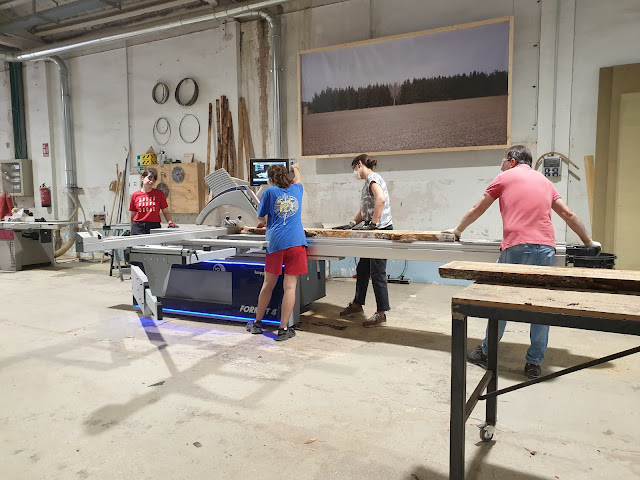





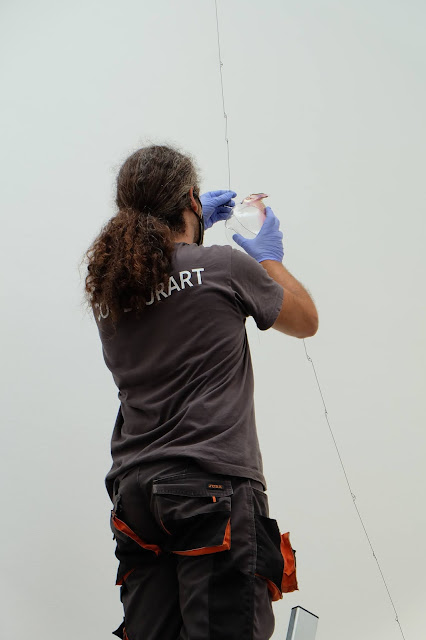






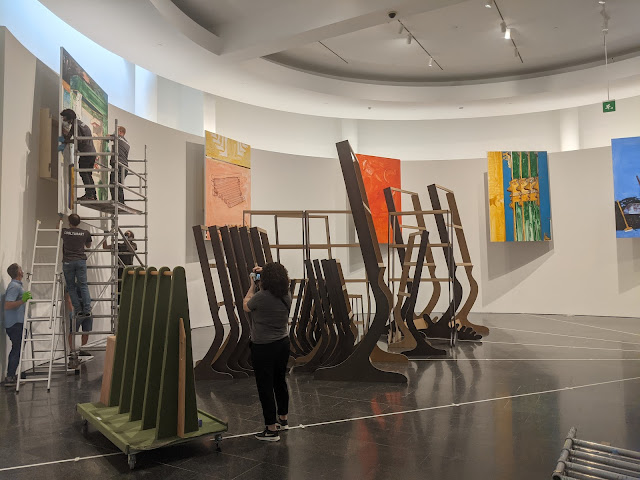

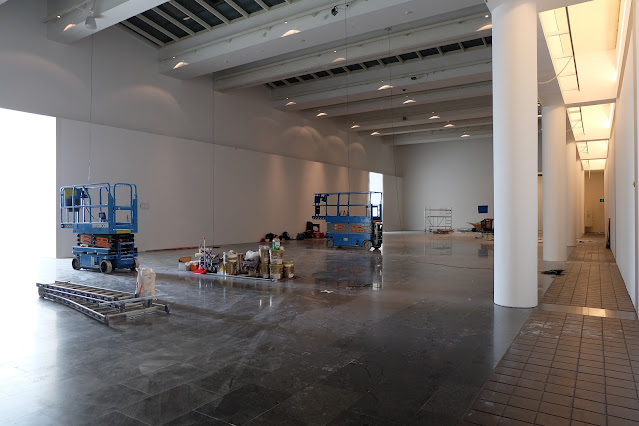





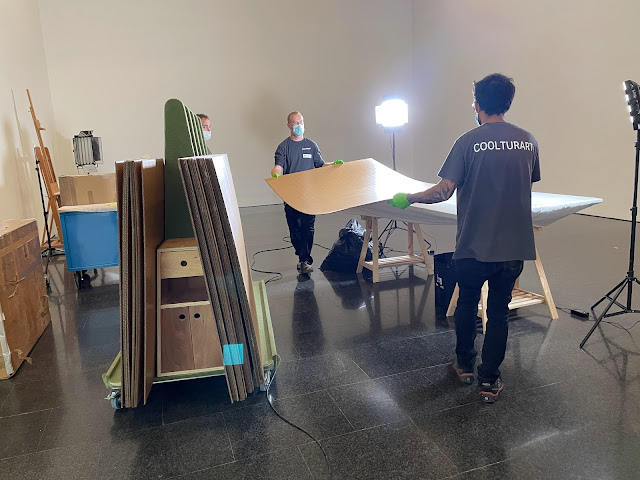




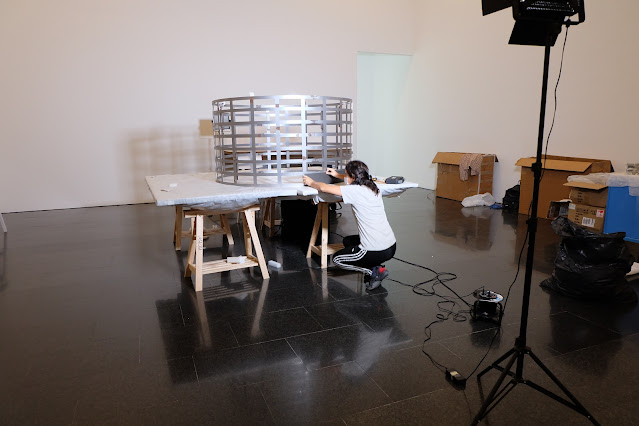
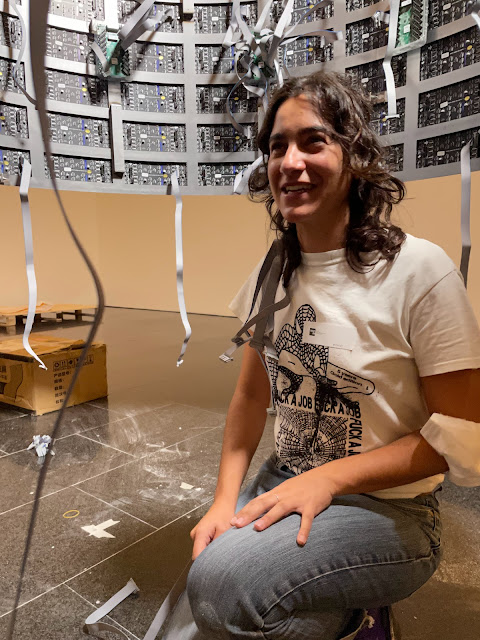
















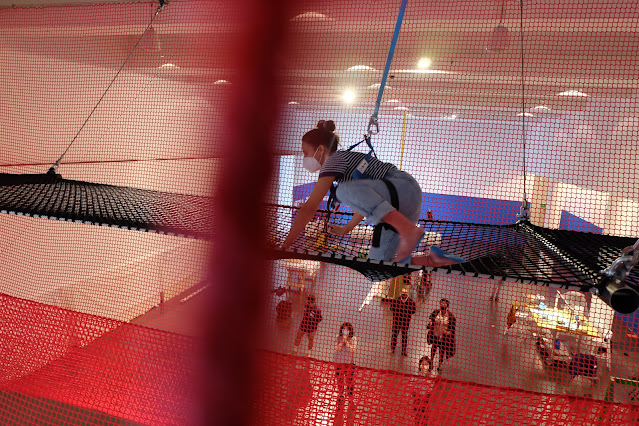











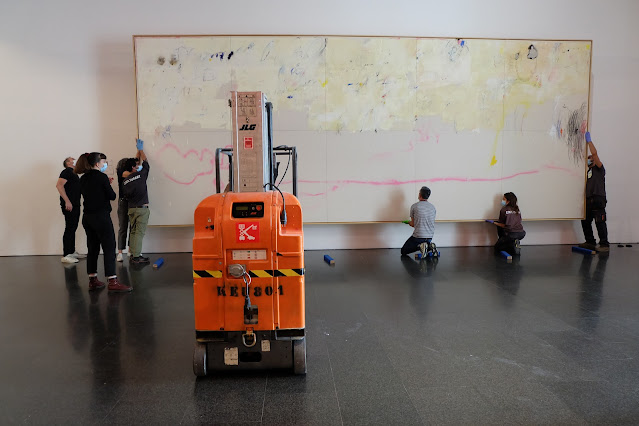



















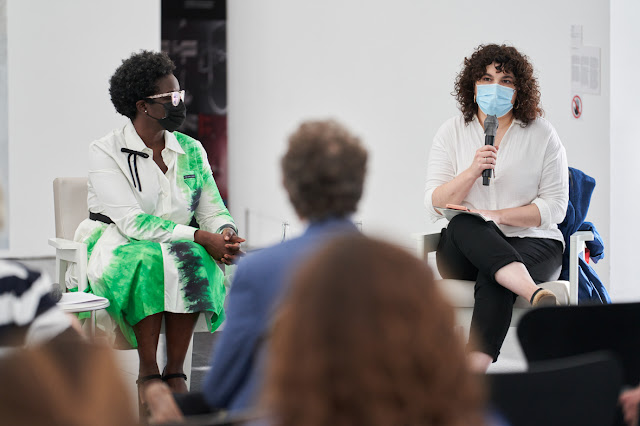


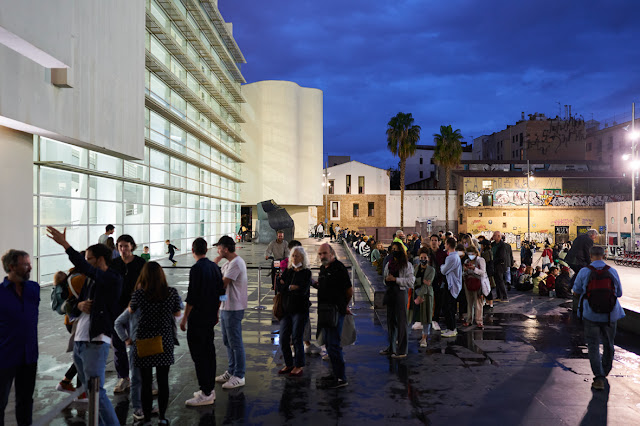









































































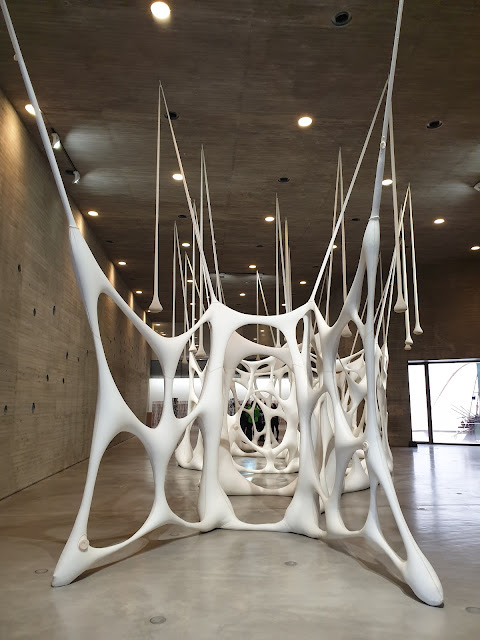
















%20SHELTER_Entering%20the%20work_2015-18_Obra%20realizada%20con%20la%20Ayuda%20Fundacio%CC%81n%20BBVA%20a%20la%20Creacio%CC%81n%20en%20Videoarte%202015____.jpg)









































